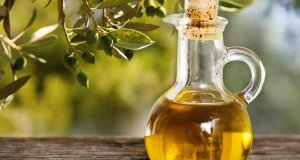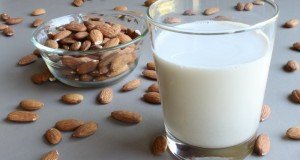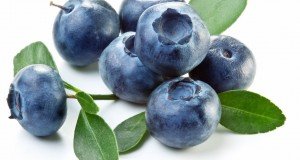Omega 3, 6 and 9: The good, the not-so-good and the questionable
(NaturalHealth365) If you are reading this article, changes are you are fairly knowledgeable when it comes to healthy and unhealthy sources of fat. For example, you probably already know that…
Hydrogenated and partially-hydrogenated oils, otherwise known as trans fats, found in food like commercially-processed potato chips and margarine, are bad for you.
Plus, other kinds of fat, such as omegas and extra virgin organic olive oil, are good for you and can even keep diseases like cancer at bay. But when it comes to the omega-3, 6 and 9, do you know how each effects your body and your health?
A closer look at the ‘good’ – Omega 3 fatty acids
A healthy human body has the ability to make most of the type of fats it needs from raw materials found in foods (and in other fats). This is not true for omega-3 and omega-6 fatty acids. They are “essential” because the only way to get them is directly through what you eat.
Omega-3 fatty acids are particularly vital because of the unique job they have in maintaining cellular health and integrity. Omega-3 fatty acids make up part of cell membranes and have an effect on cellular receptors. They also play a role in regulating arterial as well as genetic function.
There are three main forms of Omega-3s:
- EPA (eicosapentaenoic acid) comes mainly from cold-water fish.
- DHA (docosahexaenoic acid) also comes from cold-water fish. Together, EPA and DHA are called the “marine Omega-3’s.”
- ALA (alpha-linoleic acid) is the most common Omega-3 in the Western diet. It is found in vegetable oils and nuts (especially walnuts), flax seeds and oils, chia, hemp, leafy vegetables and animal fat from grass-fed animals. The human body uses ALA mostly for energy.
How omega-3’s work with the cardiovascular system is perhaps the most well-known benefits of omega-3. However, consuming adequate amounts of the right kinds of omega-3’s can have other positive effects as well. In addition to preventing heart disease, omega-3s reduce inflammation in the body as a whole.
And according to many studies, omega 3’s may help prevent cancer, including breast cancer.
A May 2015 study conducted by the University of Kansas Medical Center found that women who had high intake of specifically DHA and EPA marine Omega-3 fatty acids in relation to Omega-6 arachidonic acid had reduced breast cancer risk.
The Not-So-Good: Omega 6’s
The recent University of Kansas study suggests that the proper ratio of omega-6 and omega-3 fatty acids must be maintained in order for there to be a reduction in breast cancer risk. What does this say about omega-6’s?
Many still espouse the benefits of this kind of fat; the American Heart Association still recommends that at least 5 to 10% of food calories come from omega-6 fatty acids, despite the evidence that omega-6’s overabundance in the world’s food supply today is doing more harm than good.
Beginning in the 1990’s, studies began to come out which showed the detrimental effects these oils had on the body when consumed in large amounts (such as those eating a typical Western diet tends to do).
Why is this? Mostly it is because of what foods omega-6s come from and how these foods are processed.
In the industrialized world, omega-6’s are mostly found as linoleic acid from plant oils like corn oil, canola oil, soybean oil and sunflower oil. When these particular oils are exposed to high heat, which they are in most homes and restaurants through frying, they create a toxin called HNE or 4-Hydroxynonenal.
According to researchers at the Center for Genetics in Washington, DC, “Excessive amounts of omega-6 polyunsaturated fatty acids (PUFA) and a very high omega-6/omega-3 ratio, as is found in today’s Western diets, promote the pathogenesis of many diseases, including cardiovascular disease, cancer, and inflammatory and autoimmune diseases.”
The Questionable: Omega-9 fatty acids
Omega-9 differs from omega 3 and 6 in that this fat is “non-essential.” In other words, you don’t need to eat specific foods in order to obtain them. Recent studies have shown that omega-9’s may regulate cholesterol levels by lowering LDL and raising HDL. They may also play a role in controlling blood sugar.
For these reasons, some may recommend omega-9 supplementation, but since the body can make them as needed, I feel that this really isn’t necessary. Outside of the body’s ability to produce them, they can also be found in high amounts in sunflower and olive oils. If you wish to increase your omega 9’s by adding more of these oils to your diet (especially olive oil), be sure to ingest them at room temperature.
Getting the right amount of fats is the key to optimal health
When it comes to the omegas, finding the right balance of omega-6 and omega-3 is key. According to the World Health Organization, a healthy ratio is between 5:1 to 10:1, omega-6 to omega-3 respectively. Cut down on your consumption of omega-6’s found in high-heat processed foods, including all fried foods, and supplement with a quality omega-3 fish oil and you will be on the right track towards breast and overall health.
About the author: Dr. Veronique Desaulniers (“Dr. V”) is a best-selling author and specialist in Chiropractic, Bio-Energetics, Meridian Stress Analysis, Homeopathy and Digital Thermography. After 30 years in active practice, she decided to “retire” and devote her time to sharing her personal, non-toxic Breast Cancer healing journey with others. Her years of experience and research have culminated in “The 7 Essentials™ “, a step-by-step coaching program that unravels the mystery of healing the body. Her website and personal healing journey have touched the lives of thousands of women around the globe. To get your F.R.E.E. 7-day mini e-course and to receive her weekly inspiring articles on the power of natural medicine – visit: BreastCancerConqueror.com
References:
https://www.ncbi.nlm.nih.gov/pubmed/25936773
https://www.hsph.harvard.edu/nutritionsource/omega-3-fats/
https://www.sciencedirect.com/science/article/pii/S0098299703000232
https://ntp.niehs.nih.gov/ntp/htdocs/lt_rpts/tr509.pdf
https://en.wikipedia.org/wiki/4-Hydroxynonenal#cite_note-8
https://www.ncbi.nlm.nih.gov/pubmed/12442909
https://www.who.int/nutrition/topics/5_population_nutrient/en/index13.html











